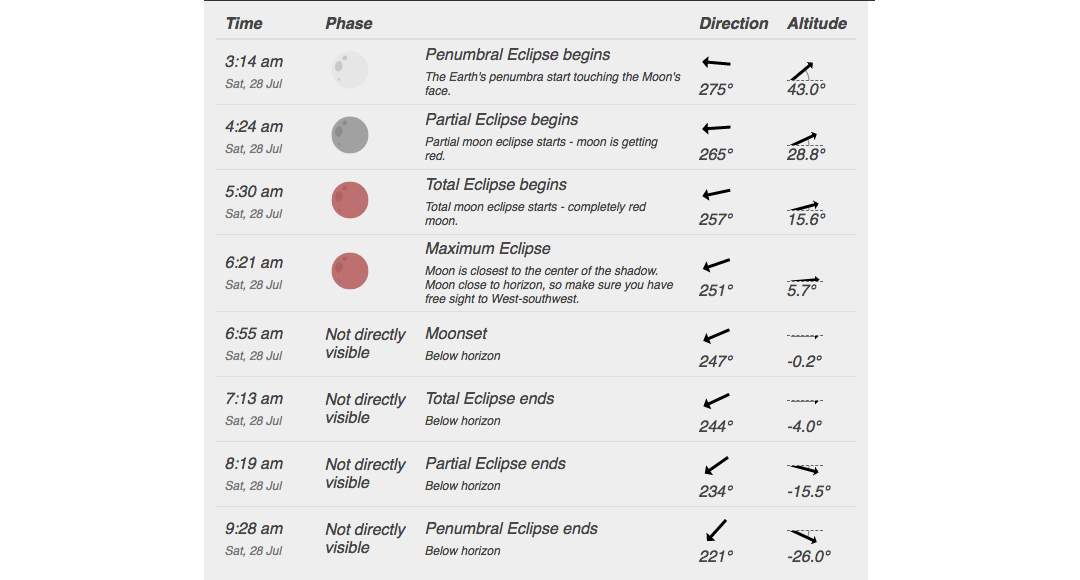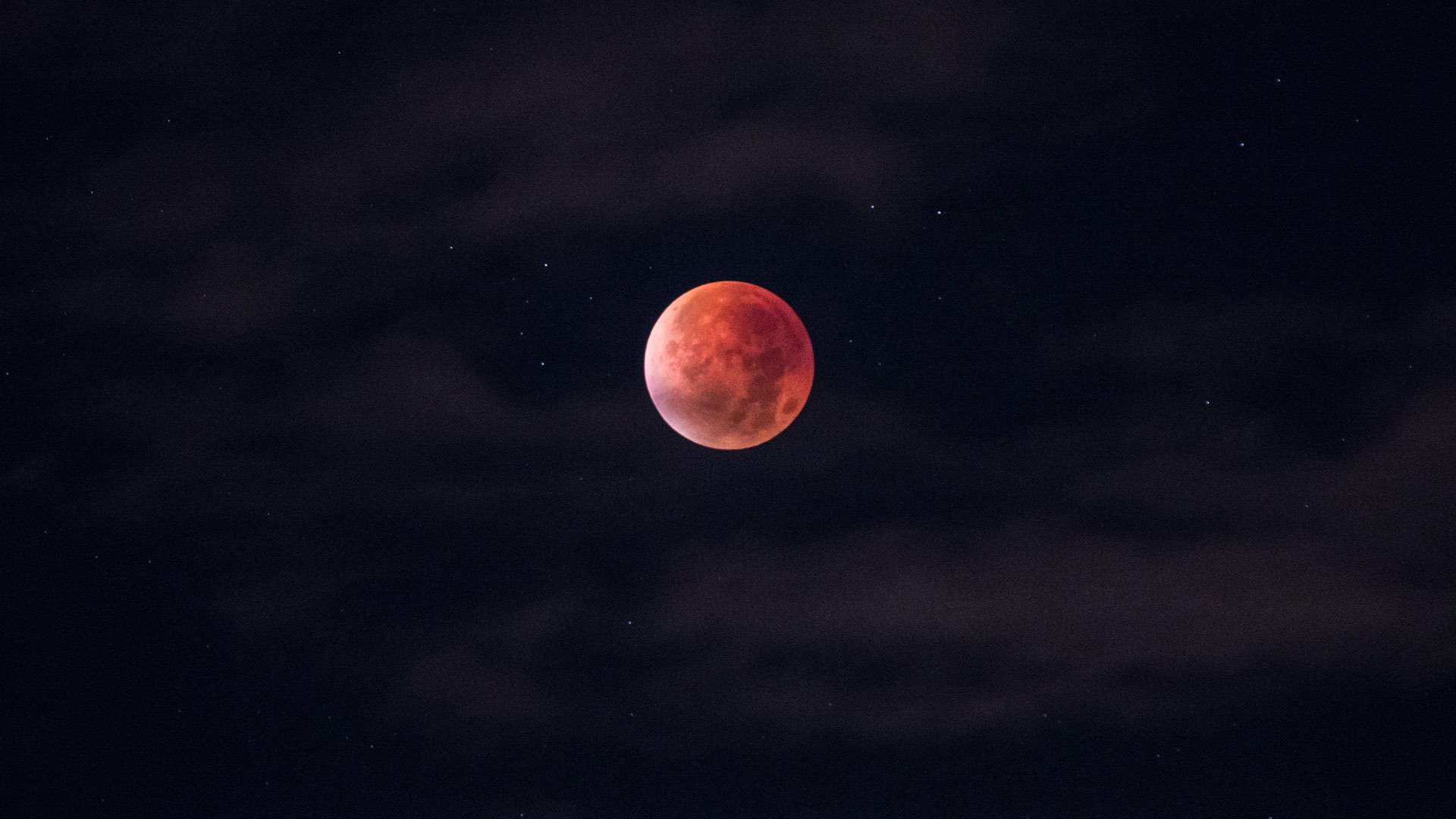Everything You Need to Know About the Longest Lunar Eclipse of the Century
What it is, where to see it and when — because there won't be another one this long until the 2100s.
Whatever else the past couple of years have served up, it has been an impressive time for folks who like staring up at the sky. 2016 ended with a huge supermoon that had everyone looking to the heavens, then 2018 began with an extremely rare super blue blood moon (a supermoon, a blue moon and a total lunar eclipse all at once).
Next, at the end of July, an epic lunar eclipse will mark the next notable celestial happening.

WHAT IS IT?
On Saturday, July 28, earth will bear witness to the longest lunar eclipse of this century — with the penumbral eclipse lasting just shy of four hours (236 minutes, to be exact) and the total lunar eclipse spanning 103 minutes.
If you're wondering what the difference is between the two (because we're all more familiar with The Mighty Boosh's take on the moon than actual lunar terms, aren't we?), a penumbral eclipse is when the earth's outer shadow falls on the moon's surface, while a total lunar eclipse involves the moon passing directly into the earth's actual shadow.

WHAT'S SO SPECIAL ABOUT IT?
As well as offering a great excuse to go stargazing, the 103-minute total eclipse pips the 100-minute event that took place on June 15, 2011 — although it falls just short of the 108-minute event on July 16, 2000. That said, eclipses that last this long are rare. When the super blue blood moon came around earlier in 2018, its full eclipse only lasted 72 minutes.
In fact, if you miss it, you'll need to wait until 2029 for a 102-minute total lunar eclipse, with others lasting the same duration expected in 2047 and 2094. Nothing that reaches 103 minutes will in length will occur again this century — and no total lunar eclipses of any length will be visible from Australia again until May 2021.
During the main event, the moon will also turn a blood-red shade thanks to sunlight that's filtered and refracted by the earth's atmosphere. So as well as a total lunar eclipse and a full moon, it'll be a blood moon as well.

WHEN CAN I SEE IT?
Australians will be able to spy the penumbral eclipse from 3.14am local time and the partial eclipse from 4.24am, before the full thing at 5.30am. If you're not able to tear yourself out of bed that early on a winter weekend morning, the maximum eclipse will occur at 6.21am.
We won't be able to see the end of it, however, as the moon will be below the horizon when the full, partial and penumbral eclipses end (at 7.13am, 8.19am and 9.28am local time, respectively).
For the full details, timeanddate.com has put together a handy to-the-minute schedule of when the eclipse will be happening in Sydney, Melbourne and Brisbane.

Sydney total lunar eclipse times via timeanddate.com
Have your cameras at the ready, obviously — and see if you can outdo the previous big batches of supermoon snaps and super blue blood moon pics.

WHERE CAN I SEE IT?
Being in the southern hemisphere, we get some of the best views in the world — weather permitting, of course. Everyone in Australia should be able to catch a glimpse, but, even so, if you're living in the city, it would be best to as far away from light pollution as you can.
Unsurprisingly, possible showers are predicted for the day in Sydney and Melbourne, which could have an impact upon visibility; however Brisbane is supposed to be mostly sunny. For Sydneysiders looking for a specific stargazing (or moon-viewing) spot, Sydney Observatory will be open from 5am.
If you can't get a clear view, The Virtual Telescope Project will be live-streaming what they're calling 'The Night of the Red Moon and the Red Planet' – because Mars will also be visible in the sky — from the skyline above Rome from 4.30am AEST.

Via Space.com and timeanddate.com.





